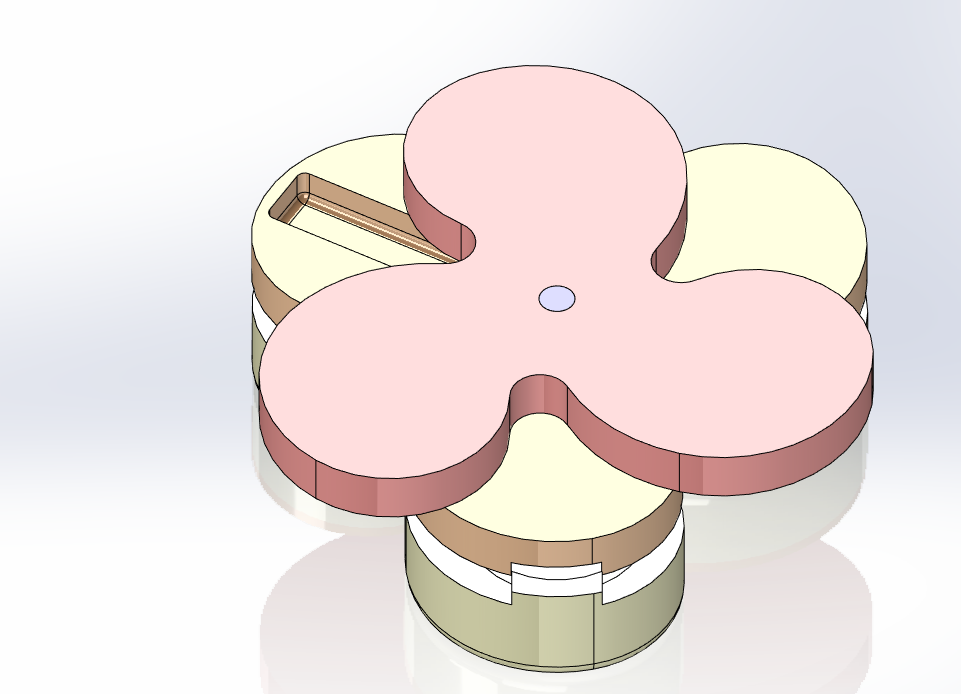For my final project, I wanted to choose something that was decorative and ornamental as well as functional and purposeful. I landed on a puzzle box, which is a box with a complex, hidden, or convoluted mechanism of opening. Often, these boxes require sliding, pushing, spinning, and reorienting in order to unlock various portions and storage receptacles, and my design is no different. My design’s aesthetic is focused around Celtic designs, which have been used since the Bronze age – these time-honored symbols can represent honor, faith, success, luck, etc. but mostly reflect one’s pride in Irish heritage. The components of these designs that I will incorporate include spirals, circular forms, radial symmetry, and geometric patterns that don’t feature straight lines.



The box must operate smoothly, with only the desired motion and no excessive wiggling or shifting that could reveal elements of the puzzle. Additionally, it should be sturdy enough to resist scratches to the finish, dents, drops, and other hazards, as I want this artifact to last through years of use. Visibly, there should be no large gaps, rounded over edges, or other unappealing defects visible, and a high degree of craftsmanship should be featured. It is also imperative that a user cannot solve the box puzzle simply by visual inspection. Hiding seams with patterns and ensuring a good fit everywhere will aid with this, although the puzzle should still be easily solved if the solution has been achieved before. I must also meet my design aesthetic goals in order to be satisfied with this project.
In order to open the box, it will be necessary to tip it upside down and rotate the top section until a ball bearing from the middle portion falls into the top. When upright, this ball bearing rests in a slot on the middle section and prevents its translation. When the ball bearing is out of the way, it’s possible to slide the middle portion out and rotate it to reveal the storage areas. Below are images showing the steps of opening the box and a transparent view through the top portion to illustrate how the alignment of slots in the middle and top sections work.






Some difficulties that I may encounter throughout the manufacturing process include the creation of tabs that are both durable enough to withstand force as users discover the way that the box opens and precise enough to prevent gaps and undesired movement, which means that each section of the box must be composed of a single piece of wood. A photo of the tab on the bottom section is shown below. Another primary challenge may be carving the triskelion into the top of the box (as shown below) to complete it’s shape and cement the Celtic theme. There will also be designs engraved into the sides of each piece, which may pose a challenge as well. In addition, the finishing process requires a very clean environment and specifically curated atmosphere for optimal results, so I will need to satisfy these conditions as closely as possible in order to achieve a smooth, durable, and flawless finish. Strength of the assembly is another major concern, but this can be mitigated by consideration of hardwood choice, grain alignment, and construction techniques. Remaining in budget when using exotic hardwoods will be a concern, but with an extensive list of connections to suppliers, I should be able to accomplish this relatively cheaply.


For materials, I have already ordered S4S lumber for each section – the bottom will be made from purpleheart, the middle from padauk, and the top from bloodwood. These woods have natural oils present that can gum up and dull cutting tools and eliminate some finishing options, but I would like to stick to a penetrative oil-based natural finish like linseed oil or tung oil, potentially with a thin layer of polymerizing evaporative finish on top to enhance scratch resistance and luster.


I plan to complete basic fabrication by April 21 and begin engraving and carving, which I plan to finish by April 26. The finishing process will only take 1-2 days, so once that is done, I will only have the report left to complete.


3 Comments. Leave new
I am really excited to see how your project turns out, I’m a big fan of puzzle boxes. So it seems to be a 2-3 step puzzle, would you try adding any additional difficulty?
Nate, I think the use of exotic hardwoods is a really cool addition to this box, and I was curious if the choices have anything to do with the Celtic aesthetic. This is definitely going to take a lot of precision manufacturing but looks like it will be worth the work. Have you considering painting or burning the Celtic design into the top of the box as opposed to engraving it? I think this might save you some time and effort.
Nate,
Your puzzle box is a great idea! The visuals you included for the post were extremely helpful in the description of your project, and the creation of such a small yet precise piece is impressive! My question is, how large will the piece be? Puzzle boxes are generally small but making one that is slightly larger than average may make construction easier that way you don’t have to make tolerances that tight. I’m very interested to see how your design works out, good luck!